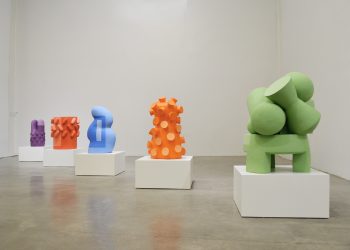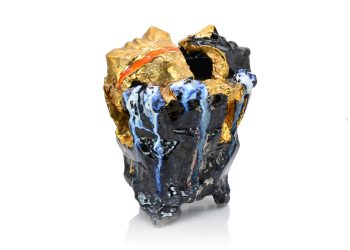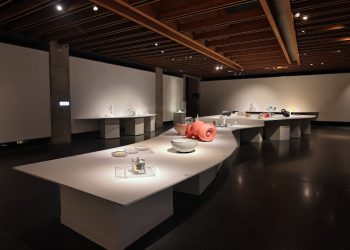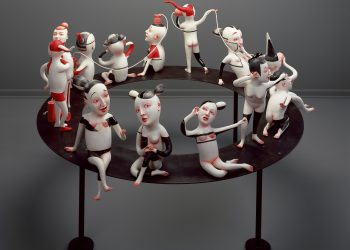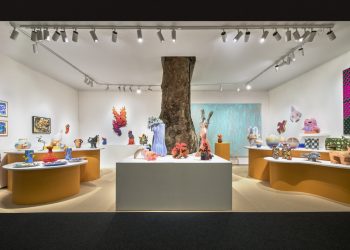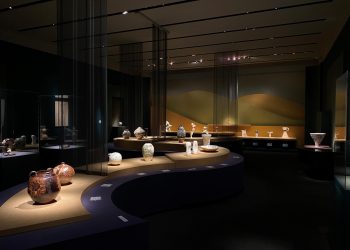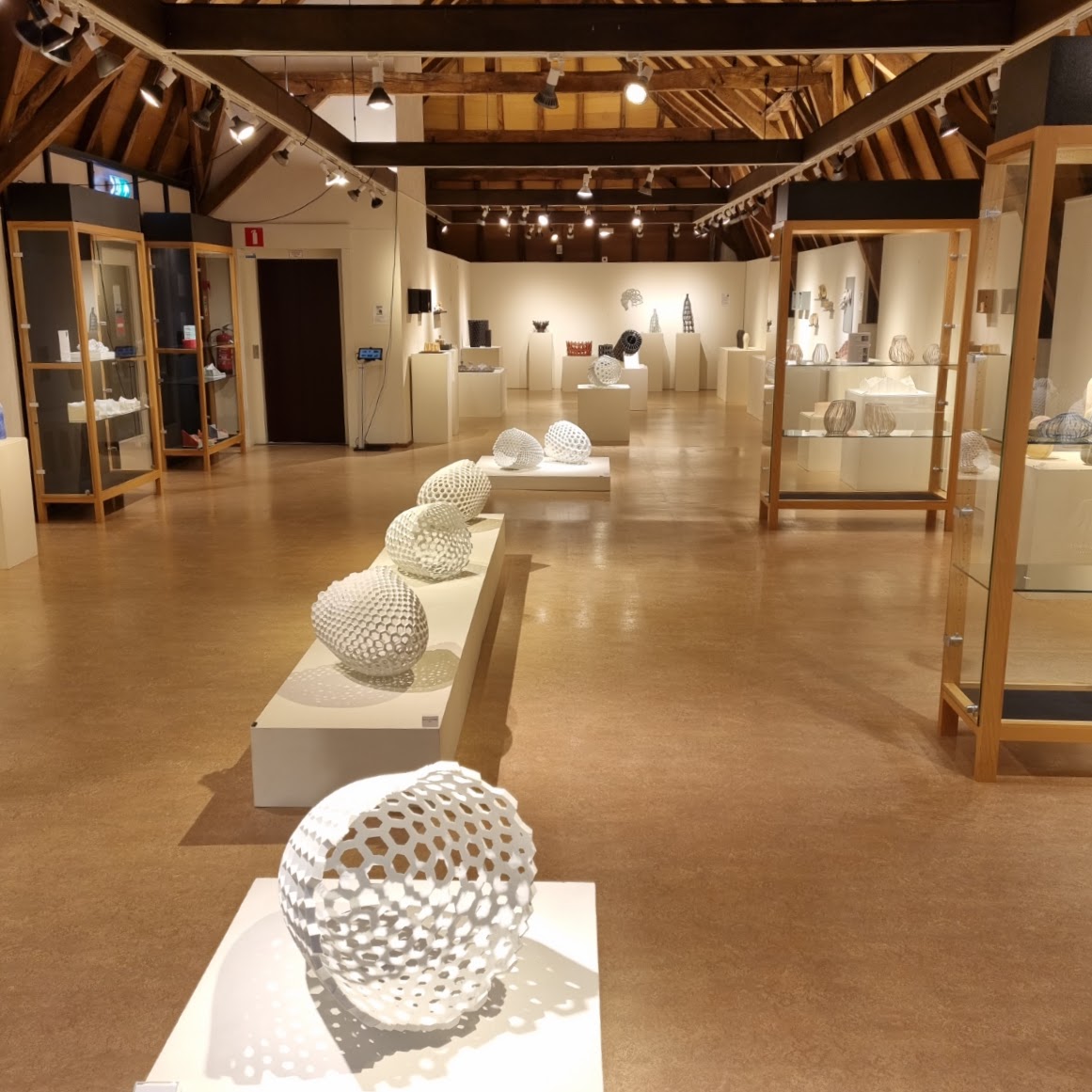
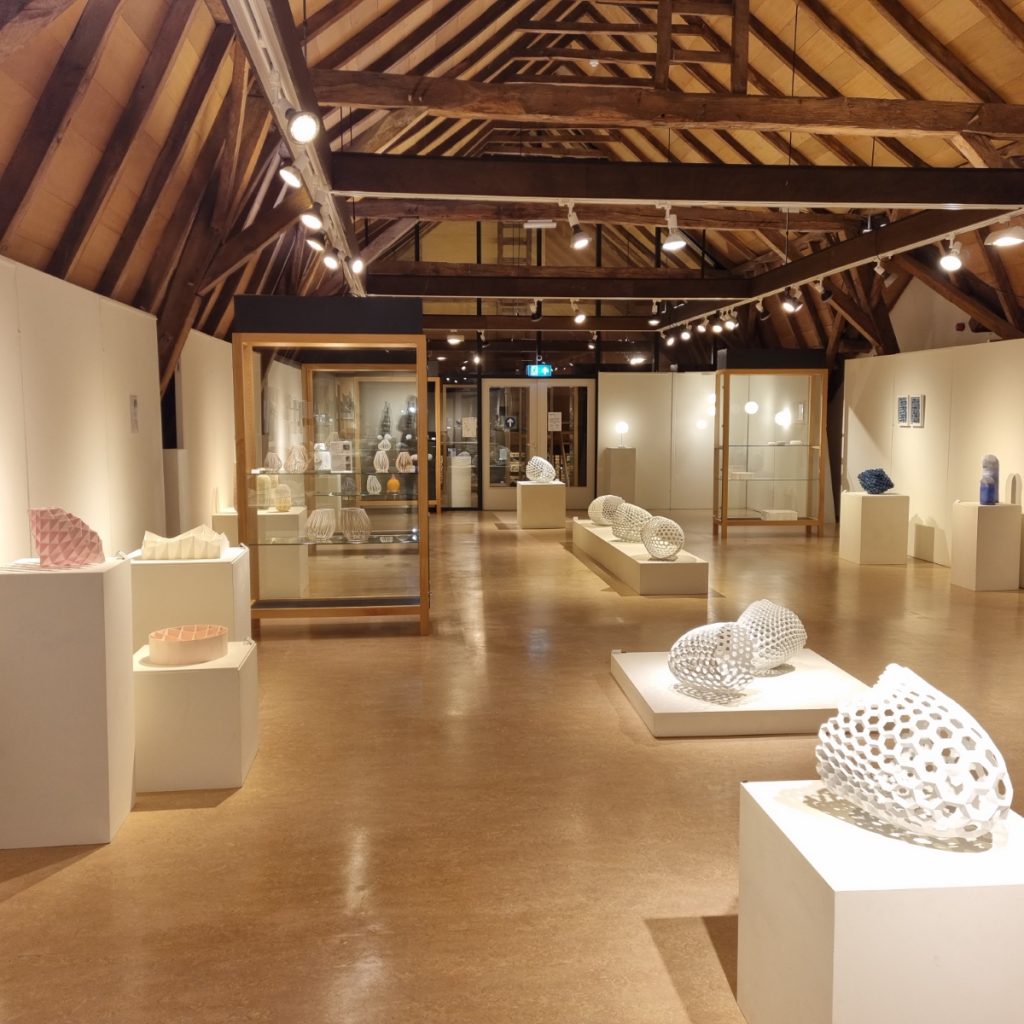
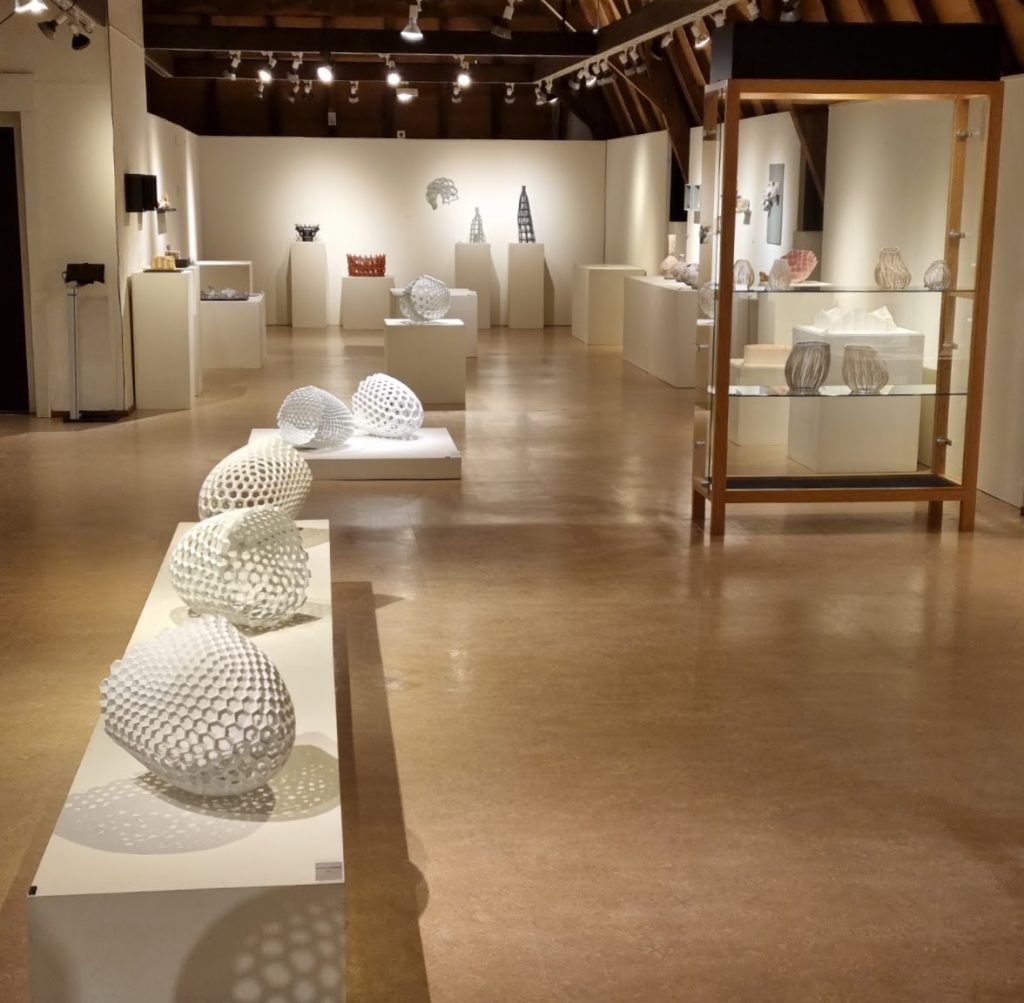
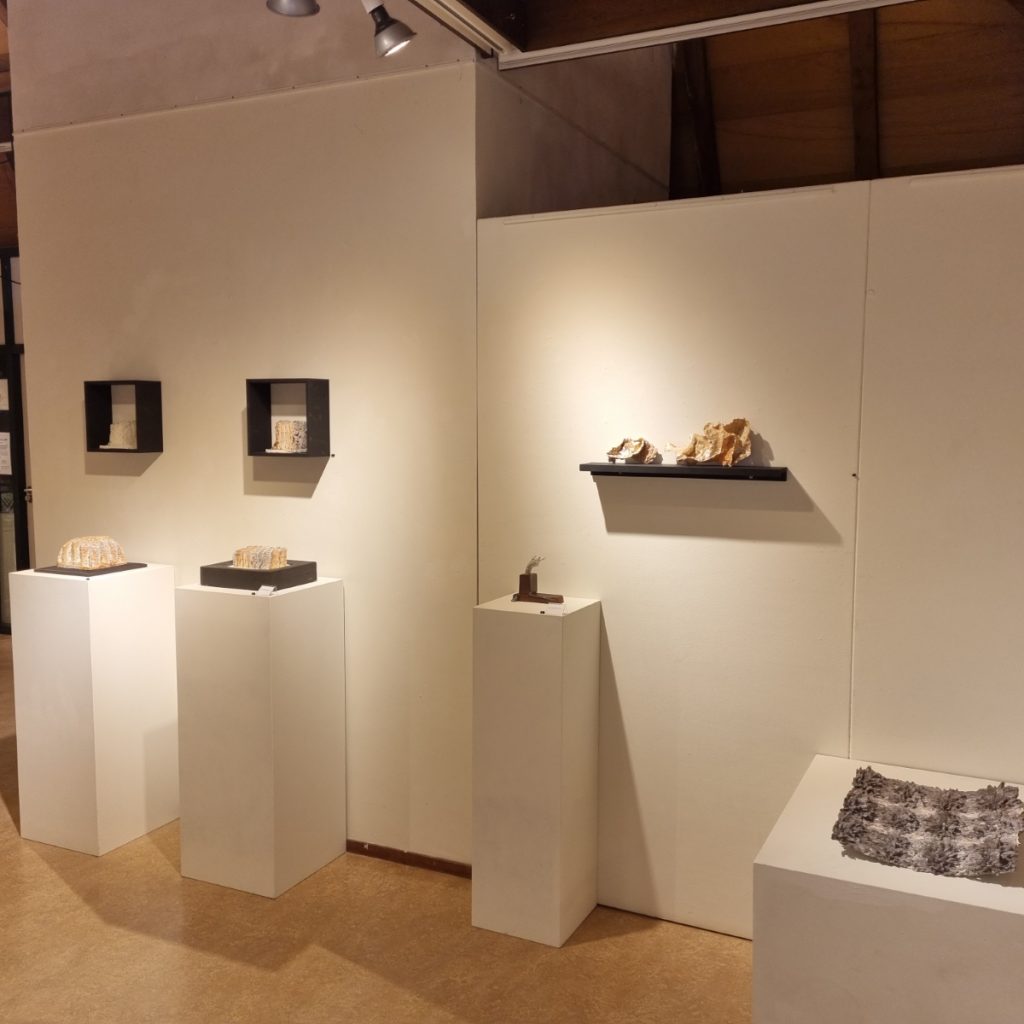
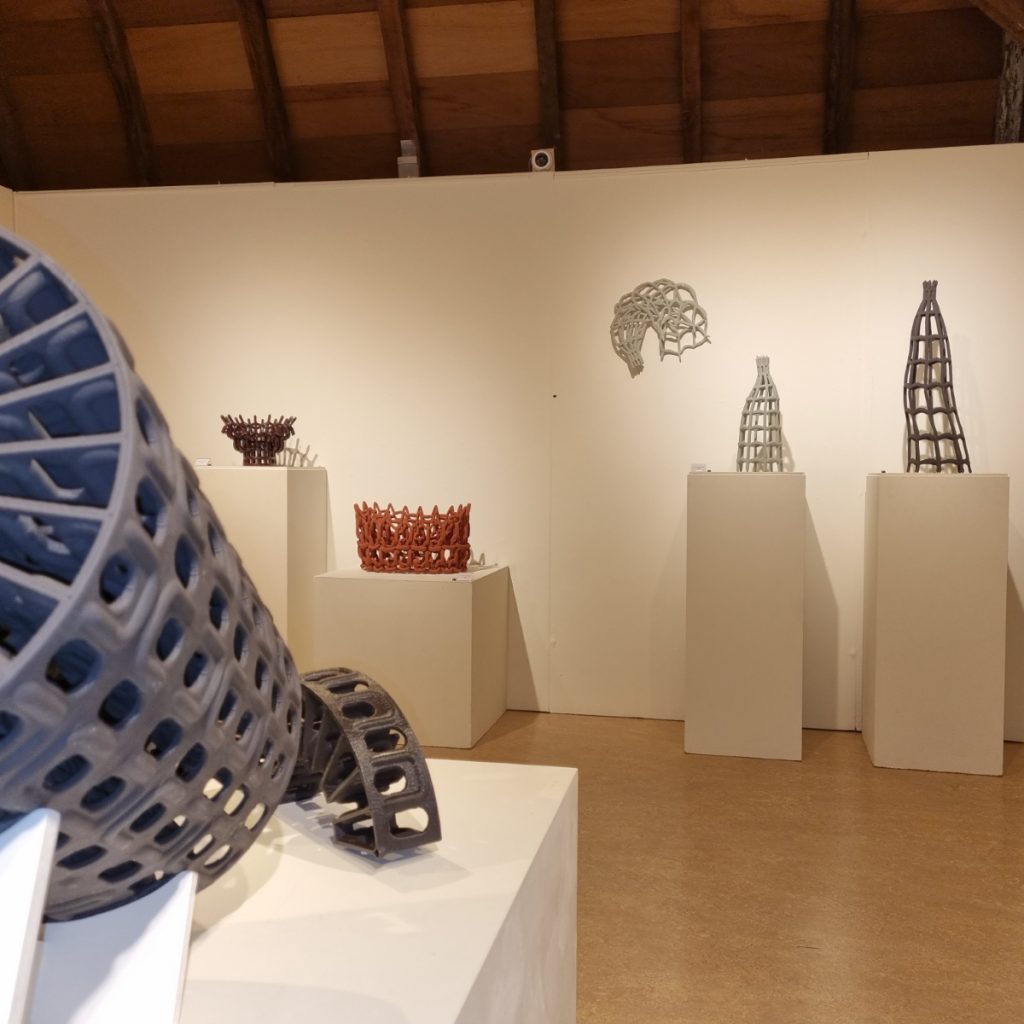
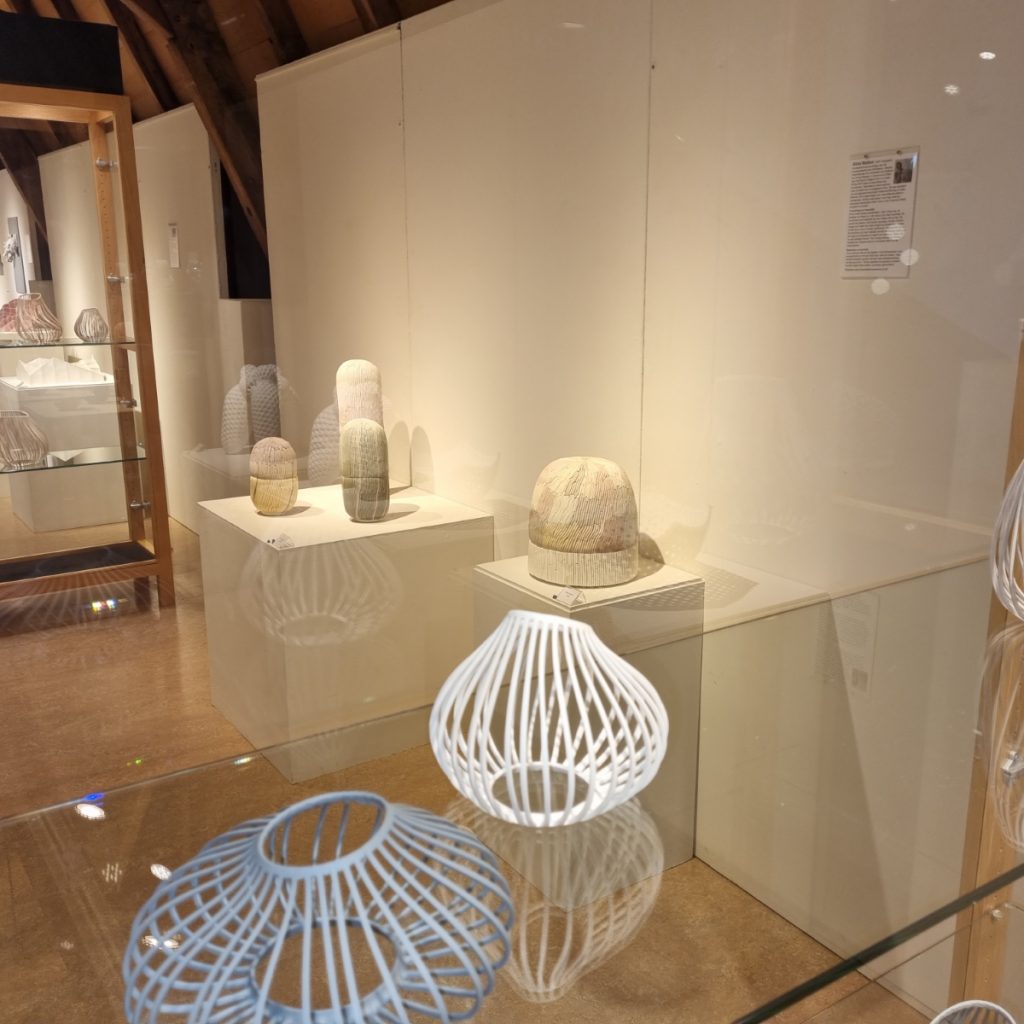
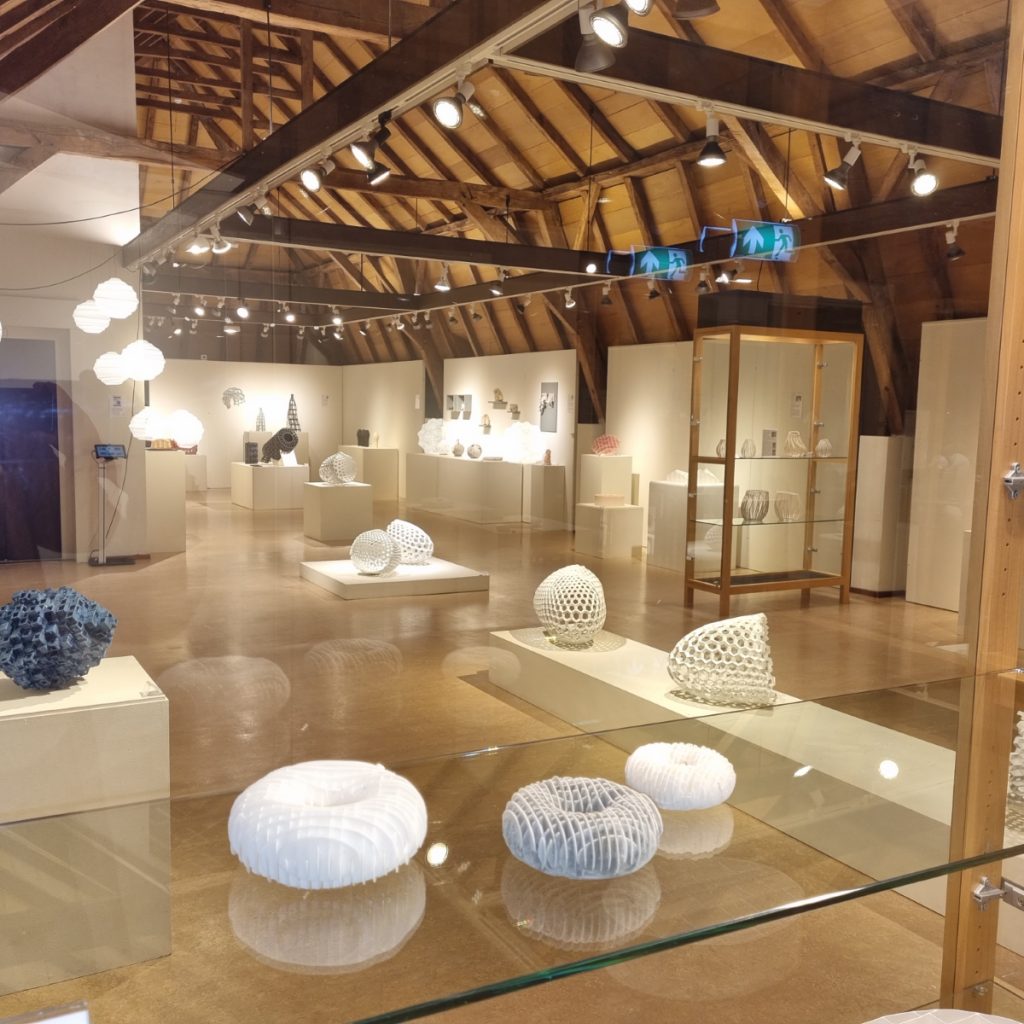
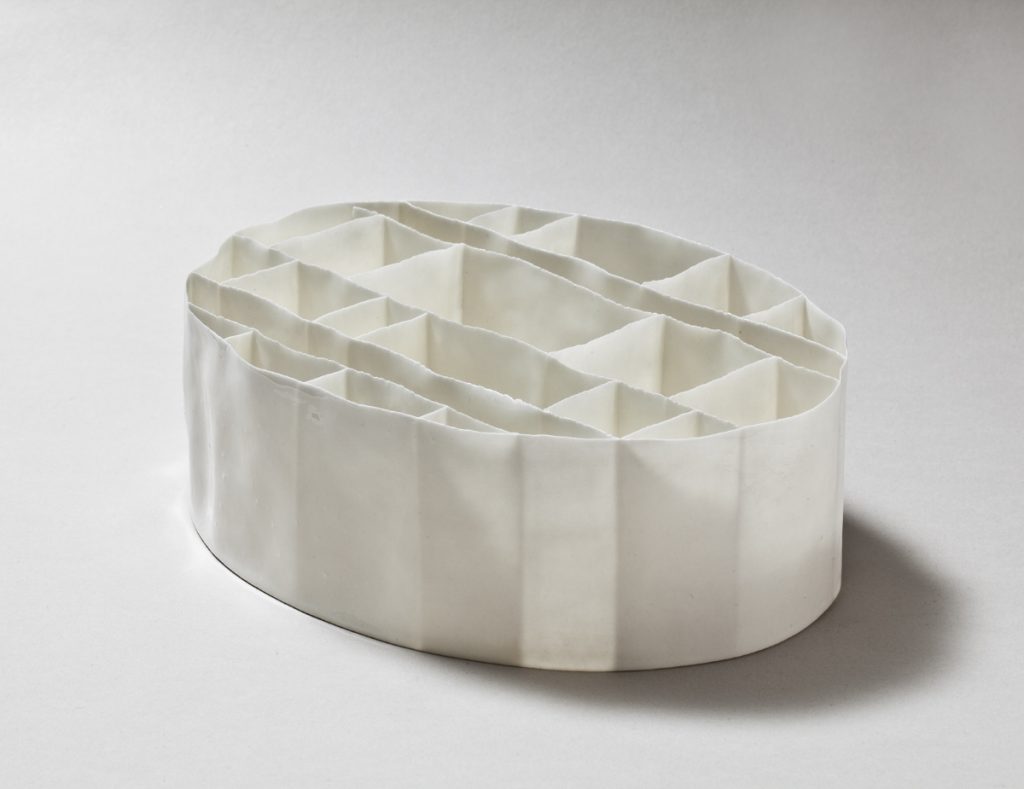
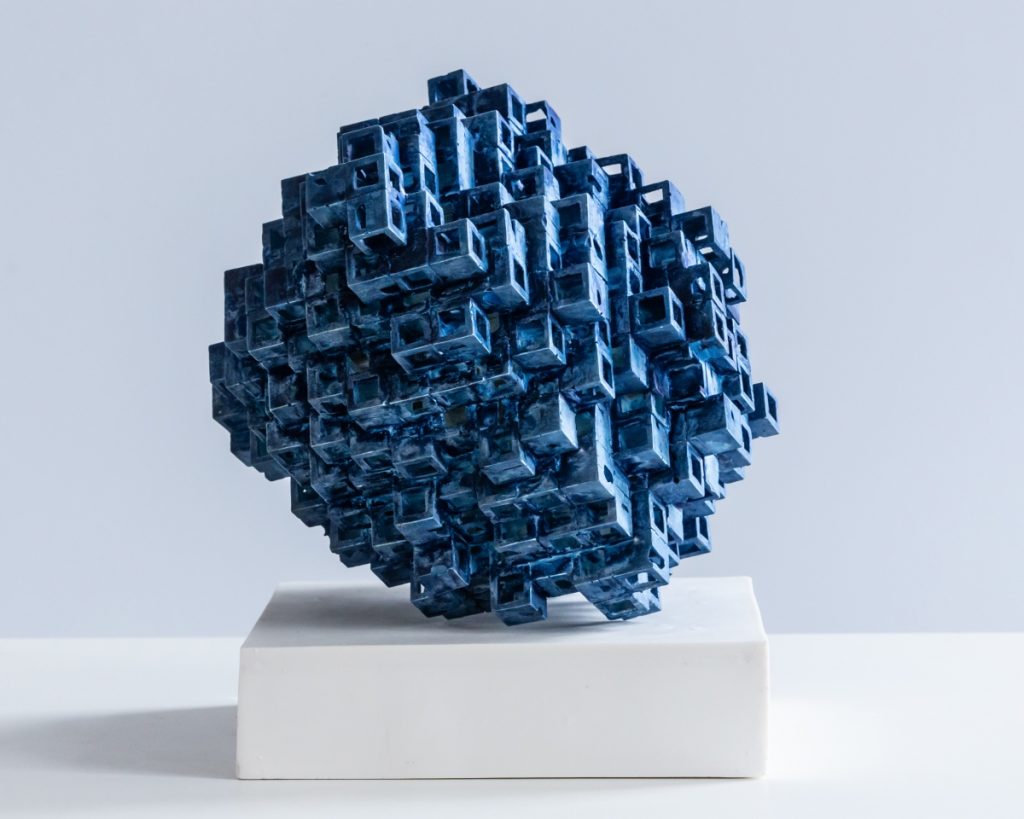
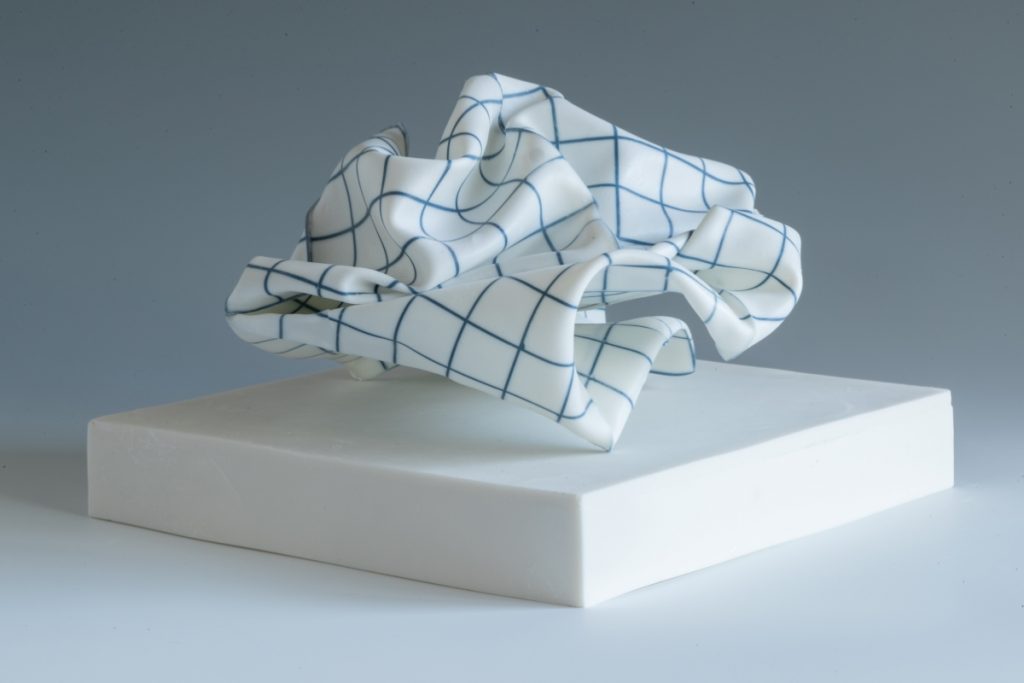
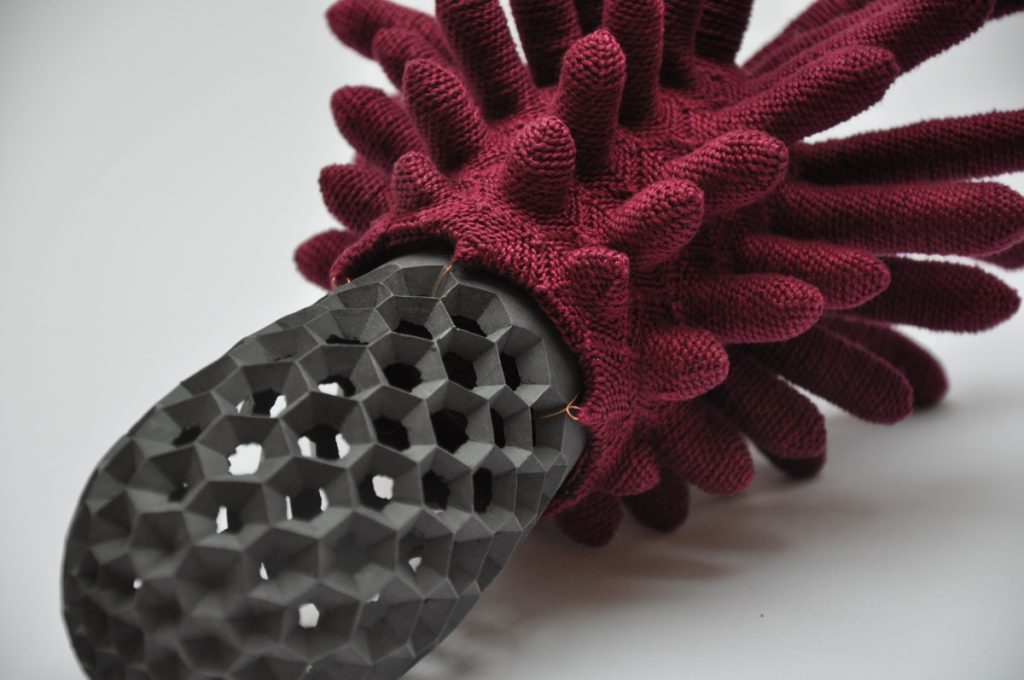
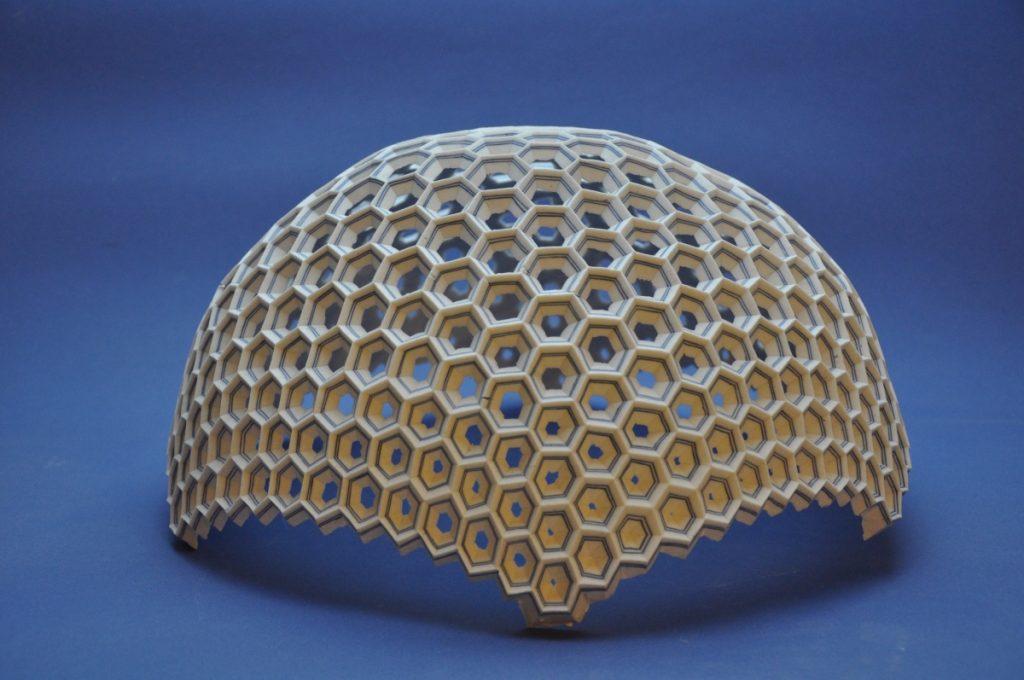
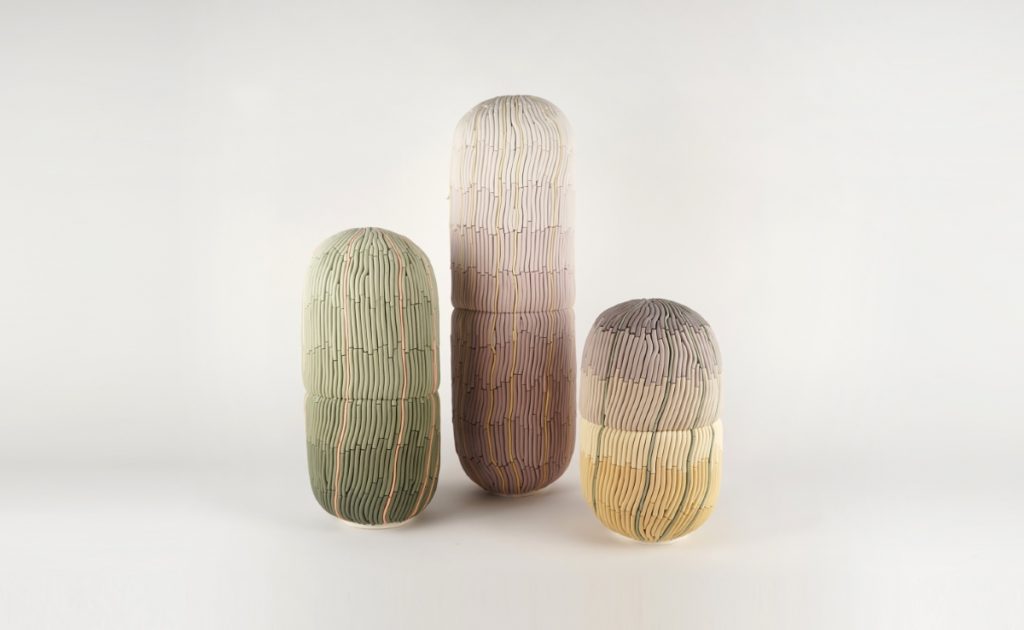
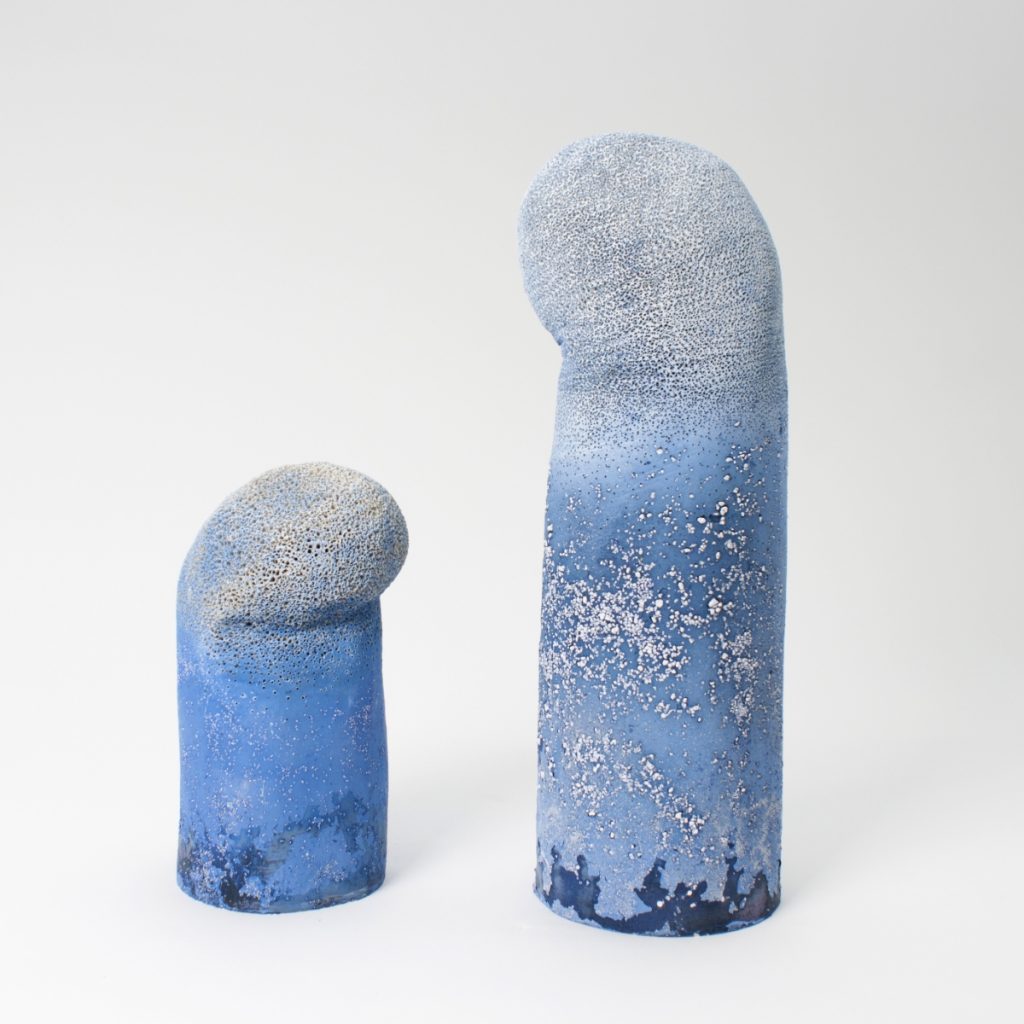
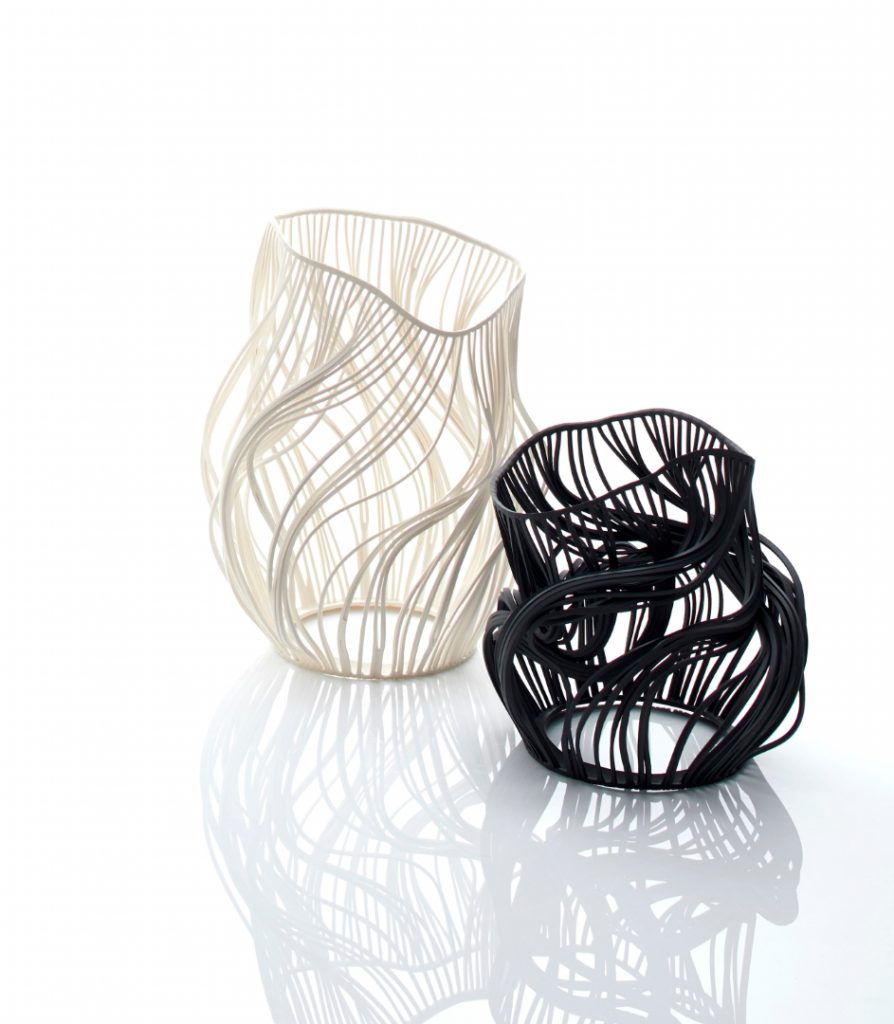
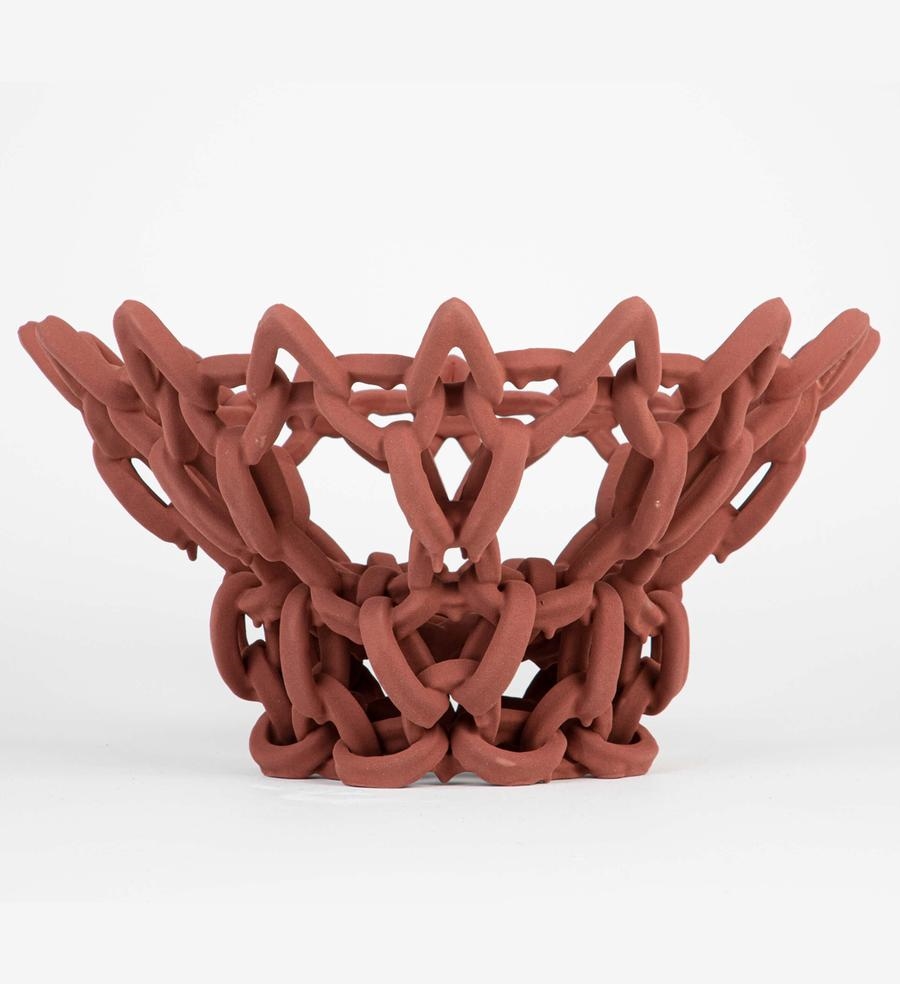
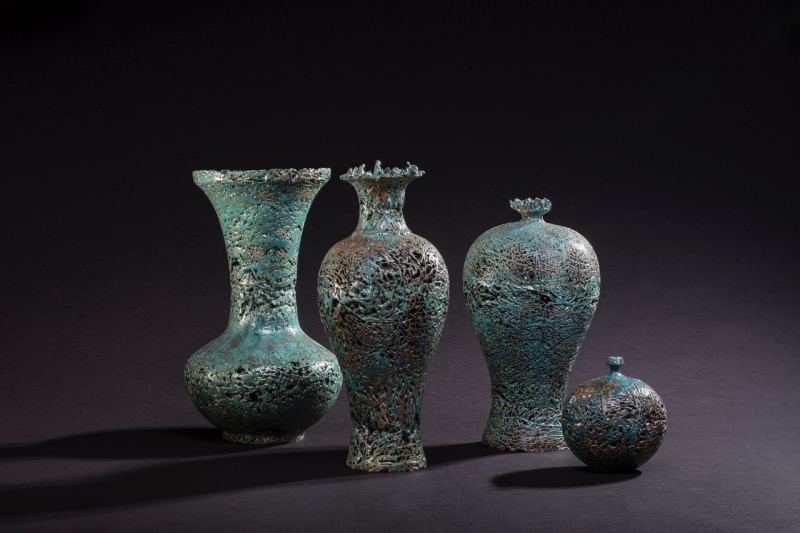
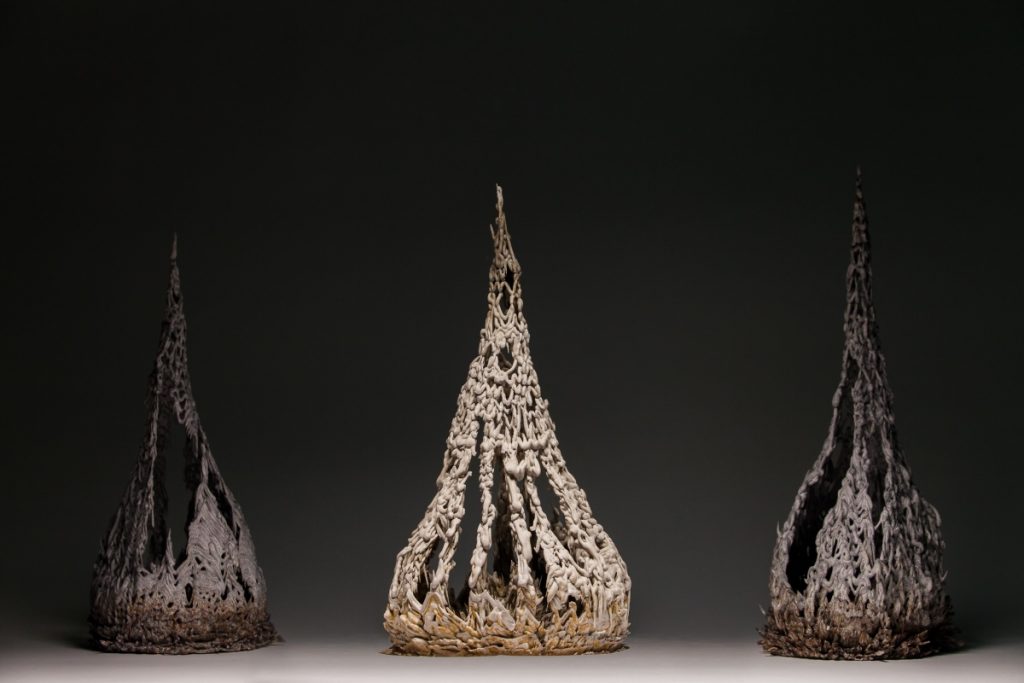
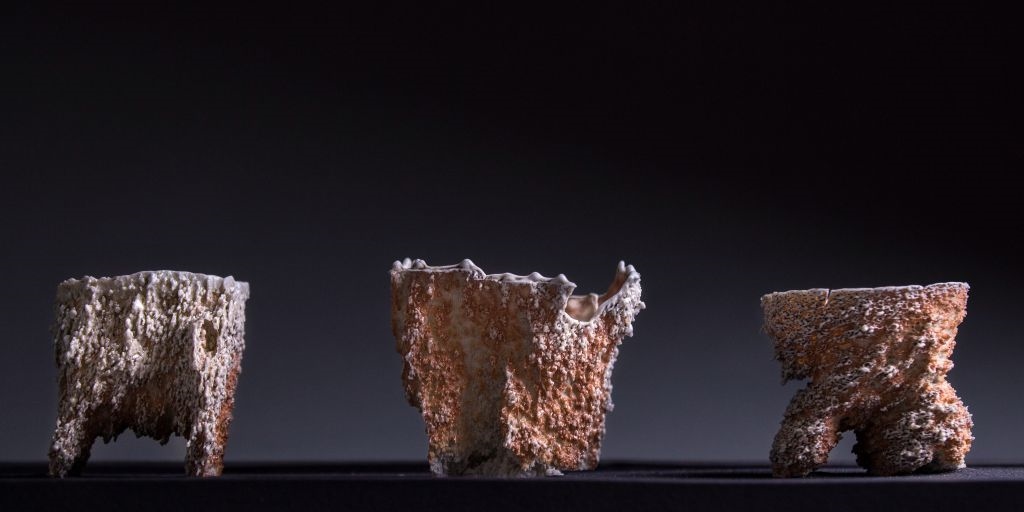
POT damn! is on view at Keramiekcentrum Tiendschuur, Tegelen
January 21 – May 15, 2022
This exhibition at Keramiekcentrum Tiendschuur Tegelen draws everybody out of or, rather, into the tent. Each visitor coming to see this exhibition is challenged by the intriguing works of art. They evoke the need to want to fathom them, to understand how they were made whether you are a ceramic expert or dummy. And this creates the ‘pot-damning’, for even the most experienced potter gets frustrated when he tries to discover how the works of art in this exhibition were made. Away with traditional craftsmanship and old potters’ techniques! The artists in this exhibition are pig-headed, inventive and don’t give a damn about all the rules of the traditional ceramic craft.
The ceramicists, artists and designers that can now be seen at the Tiendschuur aren’t sitting idle! They are leaving the beaten track, they have guts, are pig-headed and don’t care about the traditional rules. They are thinking up new and surprising methods to shape clay and their work. They are developing a new ceramic world full of possibilities and opportunities. A range of new techniques to shape clay is to be seen here, such as cutting, building, printing, pressing, milling, casting, boiling, blowing and more. That traditionally formed ceramics is beautiful must certainly not be forgotten, but after seeing these daring experiments, successful thanks to the patience of a saint, even the most good ceramics lovers are tempted to leave the beaten track now and then.
Probably most removed from the potter is the 3D printer. What this is capable of, cannot be done on the potter’s wheel: which is exactly the idea. An extension of the possibilities to process ceramics. An addition, an enrichment, certainly not a threat to the potter. That work has such a different look, it can’t be compared and, consequently, is doesn’t offer any competition. What is more important is what effect the ceramicist intends to achieve. Yao Van Den Heerik and Marlieke Wijnakker (NL) from Studio Vormvrij (Studio Form-free) have fully fastened upon this technique and themselves build 3D printers for ceramics. They make complex twisted and openwork structures. They are designed on the computer and reproduced by the printer by means of thin strips of clay. This exhibition shows the complicated and infinite possibilities of their 3D printers.
English Alice Walton doesn’t go in for throwing pots, not for printers, either. However, she does use strips of clay to construct her work. She builds her objects with countless little layers and rolls. The skins of her work are endless labyrinths in which you can get lost, beautiful meditative patterns with subtle ranges of hue.
Controversial also is Beatrijs Van Rheeden’s (NL) working method. She works like a sculptor, removing clay instead of moulding or adding it. She works leather-hard-dried porcelain dishes with little surgical knives. In this way, she creates beautiful openwork lace-like geometric structures. Even more exciting it gets when she constructs her porcelain basic forms with more colour layers or combines them with textile parts as can be seen in her most recent work.
Anne Butler from Great Britain makes crafty constructions with porcelain plates and small cast blocks. Due to the unfinished edges, her works remind one of hastily produced plastic mass products. However, if you look a little bit longer, you will see that it isn’t plastic, but ceramic plates and blocks with which she very precisely and carefully constructs her sculptures. In addition, she plays with gravity and pushes the boundaries of the material with wafer-thin cubes.
Danish Heidi Hentze makes similar work. She builds delicate geometric forms with plates that are not much thicker than paper. Her wafer-thin objects play a game, on the one hand they defy gravity by standing proudly and precisely upright, on the other, they seem to be moving along with any breath of air.
Jólan Van Der Wiel (NL) also plays with forces of nature, he uses magnetism. He has been doing so since his graduation project at the Gerrit Rietveld Academy, which was a resounding success. He mixes materials with metal powder and then takes an enormous magnet that attracts the mixture and shapes it. After it has solidified, it retains its form. He started off with plastic, after that he started to try it with clay. The nice thing about wet clay and iron is that it is going to rust, which results into a beautiful skin. This series was given the exciting name: “Dragon stone”.
Wonderful skins can also be seen in the work from Irish Zsiri Dempsey. Her work reminds one of snow that is slightly thawing already or sugar that is soaking up water. She is always developing new techniques and exploring possibilities. She is constantly experimenting with materials which she mixes through the clay or porcelain and which then burn away during the firing, creating beautiful textures.
Ruben Hoogvliet’s work is experimental, too. In 2020 he graduated in product design from the Arnhem Academy of Arts. He makes his work by immersing foam structures and leaving the clay-soaked forms to drip-dry. By leaving them to dry upside down, the forms retain a nice tension.
A link with the Arnhem Academy of Arts and the design department is to be found with Dick Lion. He set up the ceramics department here and was a lecturer for many years. Nowadays, he lives and works in Höhr-Grenzhausen, Germany. The exhibition shows a number of light objects from him. He makes the designs on the computer, then the moulds are made with a computer controlled milling machine. Finally, he casts the forms with porcelain in the traditional way. The result is perfectly finished and complex geometric forms that, thanks to the many facets, show a wonderful effect when the light shines through them.
More transparent still are the objects from American Lauren Nauman. Her objects are literally a game with lines. She makes spatial drawings with strips of porcelain only a few millimetres wide. She starts off with straight symmetric little ‘cages’. She then leaves it to the clay and the kiln to set things in motion. The lines start to bend, sag and twist during the drying and firing. Her work is completed by the elements of light and fire, which make her forms dynamic, they seem to be dancing or waving like grass in the wind. Where some other ceramicist would cry: “Pot damn!”, Lauren cries “Eureka!”. With only a few lines she shows the whole ceramic process and cheers any ‘failure’.
Exhibitors: Anne Butler (GB), Zsiri Dempsey (IE), Yao Van Den Heerik & Marlieke Wijnakker (NL), Heidi Hentze (DK), Ruben Hoogvliet (NL), Dick Lion (NL/DE), Lauren Nauman (VS), Beatrijs Van Rheeden (NL), Alice Walton (GB), Jólan Van Der Wiel (NL).
Contact
info@tiendschuur.net
Keramiekcentrum Tiendschuur Tegelen
Kasteellaan 8
5932 AG Tegelen
the Netherlands




